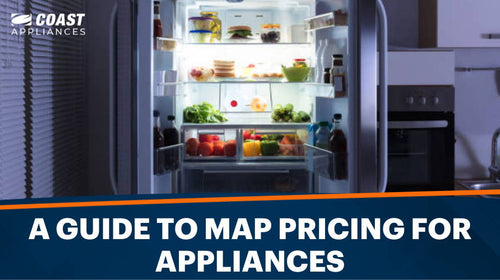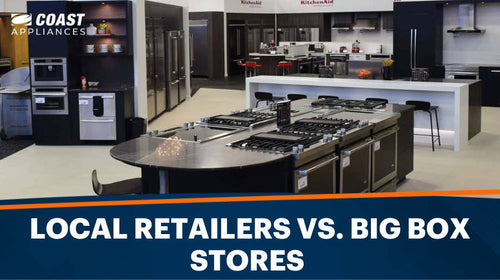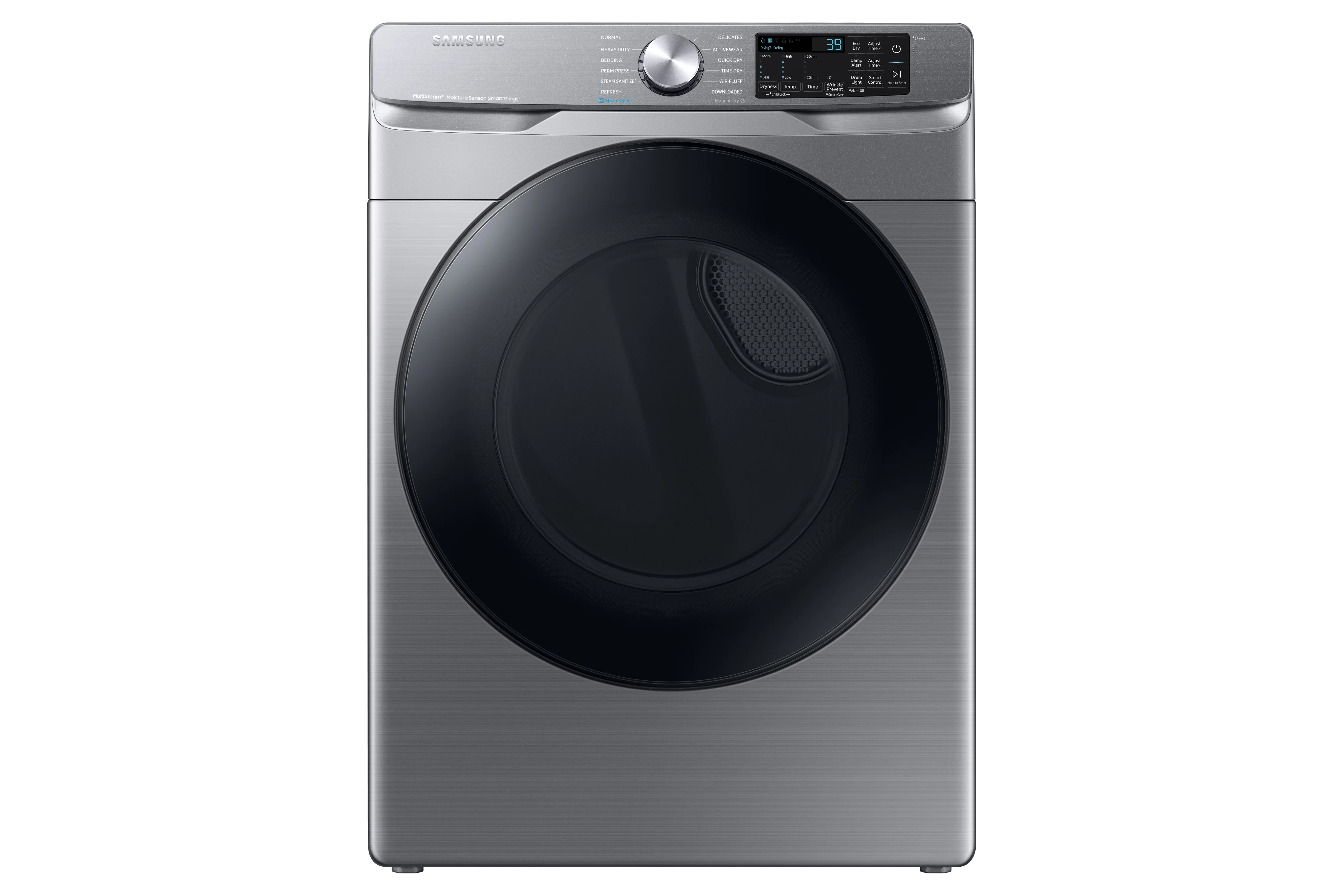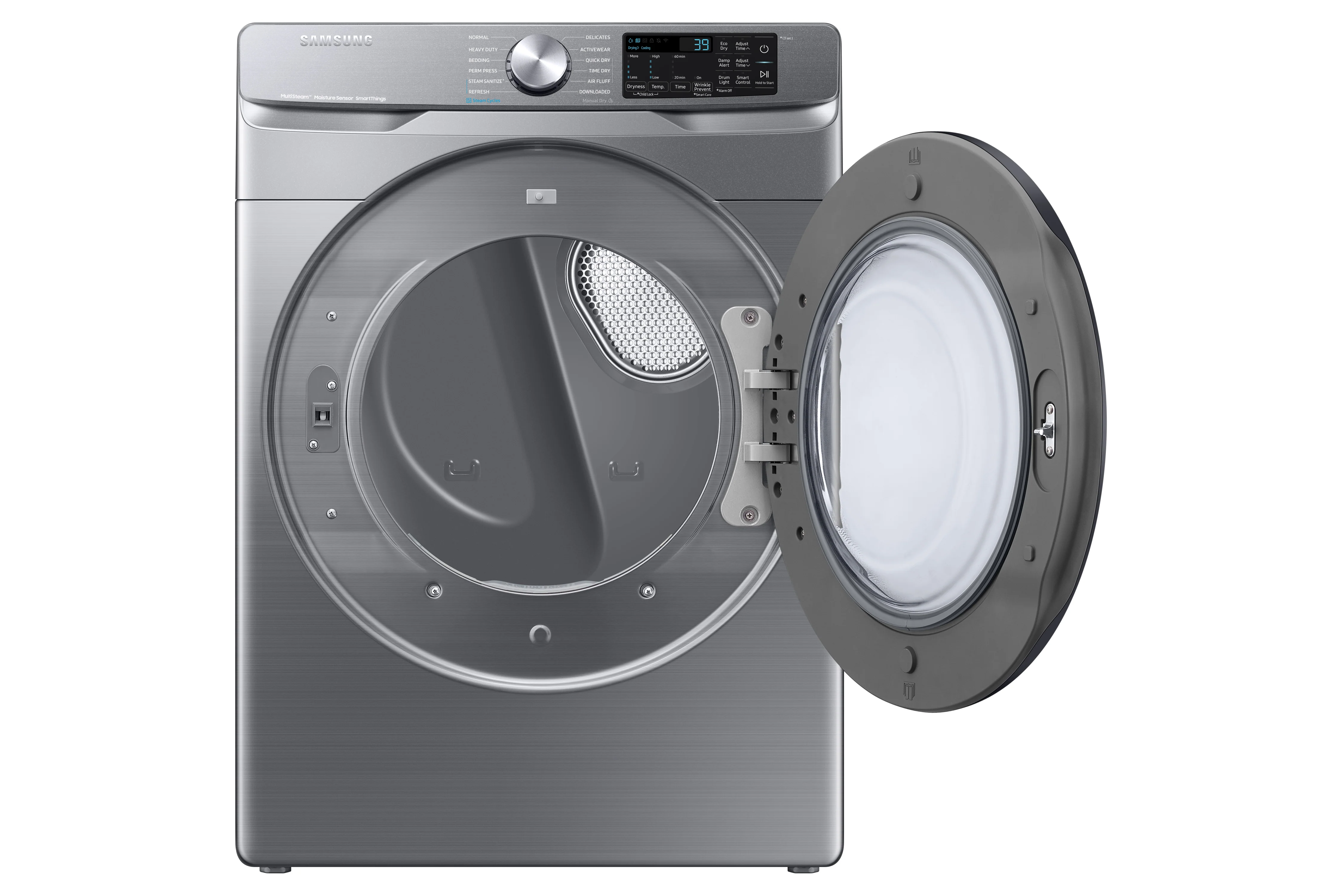Choosing between a slide-in and a freestanding range is perhaps the most crucial decision that impacts the whole design of your kitchen. While a freestanding range allows you to go for a standalone or a built-in cooking range, a slide-in can be installed between two cabinets to save a lot of space. If you are planning on designing or redesigning your kitchen and finding it difficult to pick the right range, then this article can help.
This article clarifies the differences between freestanding and slide-in ranges to help you find the best cooking range for your kitchen. We will cover the following:
What Is a Slide-In Range?
A slide-in range is meant to be sleek with no back guard, as the controls are housed upfront or on top. This makes it easy to access. It is designed with lips on each side that overlap the countertop and blend with it, giving it a built-in look. A slide-in range needs cabinets on both sides to be installed, as the side panels are unfinished. Besides offering a seamless finish to a kitchen, slide-in ranges have numerous other benefits but also a few drawbacks. Take a quick look at both.
Benefits of a Slide-in Range
A slide-in range is designed to slide between two cabinets, appliances, or other fixtures, which makes it suitable for modern kitchen décor. The controls are prominently displayed at the front, making it easier to access without stretching your hand over a steaming pot. It is not a freestanding unit, so there is no bulky back guard. The overhanging sides of a slide-in range prevent food from spilling into the gaps between the cooktop and counter, making cleaning a breeze.
Every slide-in range is designed with a downdraft ventilation system. It offers not only good ventilation but also saves additional costs on ventilation appliances. This range is ideal for spaces with decorative backsplash walls or kitchen islands, especially in modern kitchens.
Drawbacks of a Slide-In Range
The slide-in range is a little more expensive, so it might not fit a tight budget. The front controls may be easier to access but are exposed to children’s reach, so make sure to have safety measures in place. The oven may be smaller than a freestanding range. A slide-in range is also unsuited for standalone installation as the sides are unfinished. It is not a freestanding unit, so if placed against a wall, protect it by installing a tile behind the range.
What Is a Freestanding Range?
A freestanding range has a built-in backsplash, making it versatile. As the name suggests, they can be installed anywhere in new or existing kitchen décor. The integrated back guard has the main controls. Freestanding ranges may not blend in with the counter but come in a wide range of models. To help you narrow down your decision about whether or not to install a freestanding range, here are some pros and cons.
Benefits of a Freestanding Range
The integrated back guard of a freestanding range can shield the wall in your kitchen from smoke and spills if placed against the wall. A freestanding range with finished sides can be installed anywhere. A freestanding range is also a budget-friendly option. As it is more popular, you can get a wider choice of sizes and finishes. The controls in a freestanding range are housed on the back guard and are out of children’s reach.
Drawbacks of a Freestanding Range
With all the pros, the freestanding range does have some drawbacks too. As the models look outdated, these ranges don't blend in with modern kitchen décor as much as models without back guards do. The controls are placed on the back guard, so you have to reach over hot burners or cookware to adjust the temperature of the burners. The gap between the stove and cabinet is also a concern as spills often enter it, making them harder to clean.
Freestanding vs. Slide-In Range – the Difference?
Although both play the same role in the kitchen, there is a world of difference between a freestanding range and a slide-in one. It is important to note these differences to find the right range for your kitchen. A major difference can be seen in the installation process. A freestanding range can be installed anywhere a power or fuel source is available. However, with a slide-in unit, you will need two cabinets or any kind of fixture to cover up the unfinished ends on both sides.
The next big difference is the placement of controls. A freestanding unit houses all the controls on the back guard, which are difficult to access while cooking. The controls are placed right on top or at the front with a slide-in range for easier access. There is a remarkable difference in these ranges when it comes to the burners and features. Usually, a slide-in range comes with more advanced features and multiple burner options, while a freestanding range is based on the traditional model.
Lastly, don’t forget the price point. If you are on a tight budget, then a freestanding range will be more suitable than a slide-in one. This makes freestanding ranges more popular, so you will get more options like gas, electric, etc. A slide-in range is on the more expensive side and can burn a hole in your pocket.
Which is Better, a Slide-In or a Freestanding Range?
It all depends on your needs and budget. If you are looking to buy a range as an addition to your existing kitchen with no plans to revamp the décor, then a freestanding range is a wise choice. You don’t have to set cabinets or fixtures on both sides or protect the wall behind it. Just buy a freestanding range and set it up anywhere in the kitchen, even at the end of a cabinet. However, if you are looking for a sleekly designed range that will complement your modern kitchen décor, then a slide-in range wins the game.
A freestanding range is more budget-friendly and comes with more options than a slide-in range. The only problem might be the traditional design with no advanced controls or features. This is where a slide-in range can be a good option. With diverse features and multiple high-output burners, a slide-in range is a great fit for a busy kitchen. It also makes cleaning easier as there are no gaps between the range and the cabinets.
For homes with children, a freestanding range with controls at the back is the safest pick. You might have to reach over a heated pan to control the temperature, but it will be out of the children's reach. For homes without curious children, a slide-in range can be a good option with easily accessible controls at the front.
If you are looking for the best cooking range, then you should know that both slide-in and freestanding ranges can work wonders for a kitchen. The trick is to know your needs and decide on your budget to pick the best cooking range for your kitchen and family.
FAQs About Freestanding vs. Slide-in Range
Above, this article described every aspect of freestanding and slide-in cooking ranges to clarify their differences. The information may have helped you in choosing between the two, but there can be some more questions that crop up. Below are the answers to some commonly asked questions about freestanding and slide-in cooking ranges. This FAQ section will leave no space for doubt in your mind.
Can a slide-in range replace a freestanding range?
These two cooking ranges come in completely different designs, which is evident in their installation. Slide-in ranges fit between two cabinets or kitchen counters, so they don't have finished sides like freestanding ranges. Installing them as freestanding ranges will expose the unfinished lips on either side, ruining your kitchen décor. Also, leaving the unfinished sides open can increase your chances of getting hurt, and cleaning after cooking can be tedious.
Also, a slide-in range doesn’t have a back guard, meaning the smoke, grease, and spills can spread all over the kitchen wall if placed against it. While installing a freestanding range, you don’t have to risk ruining your kitchen wall because of the heavy back guard. So, converting your slide-in range into a freestanding one can result in a messy kitchen with a greasy back wall, and nobody wants that.
Why are slide-in ranges more expensive than freestanding?
Freestanding ranges are going out of style because of their traditional look and design. They have fewer features with a fixed number of burners. This absence of advanced features and conventional design has kept freestanding ranges budget-friendly. The price point of these ranges can suit anyone with a tight budget, unlike a slide-in range, which is comparatively more expensive.
Slide-in ranges are more suitable for a modern kitchen that demands a sleek design that seamlessly blends with the décor of your kitchen. The unfinished ends give you the freedom to add cabinets on both sides in such a way that the whole range appears built-in and matches the décor. Besides the upscale look, a slide-in range comes with an advanced burner and temperature controls like convection. A slide-in range has multiple burner options, making it ideal for busy kitchens or large families. As the controls are housed on top or in front, they can be easily accessed without the risk of you getting burnt, unlike a freestanding range.
Do slide-in ranges stick out?
This is a general question and something people looking to buy a slide-in range worry about. To be precise, the answer is yes, but this is nothing to worry about. This might sound strange as the slide-in range is meant to blend with your kitchen décor and seamlessly integrate with the cabinetry. Yes, it does stick out but not fully. When a slide-in range is installed, the unfinished ends are attached to the cabinets on both sides, leaving no hairline gap in between so the entire thing looks built-in. However, a slide-in range, excluding the door, is only flush with the cabinet base.
Each slide-in range model is designed to ensure that the oven door sticks out of the cabinet by a couple of inches. But don't panic, this will not look weird. It perfectly complements the kitchen décor as the two-inch difference is hardly noticeable. The oven door is made to stick out to protect the surrounding cabinets from damage. In some models, the oven door might stick out further, which should not be a concern. Instead, if the door doesn't stick out, then it can be a safety hazard. So, take a look at the oven door of the slide-in range before buying if you want it to stick out a particular amount.
Conclusion
The confusion between choosing a slide-in range and a freestanding range is valid, but it can be solved by knowing the differences. These two ranges are designed differently, installed differently, and have different looks and controls. If the information shared in this article has helped you figure out the cooking range that will best suit your kitchen, then the wise decision will be to go for a trusted brand.
Check out Coast Appliances’ massive collection on its website to invest in the right product that will add long-term value to your kitchen.















